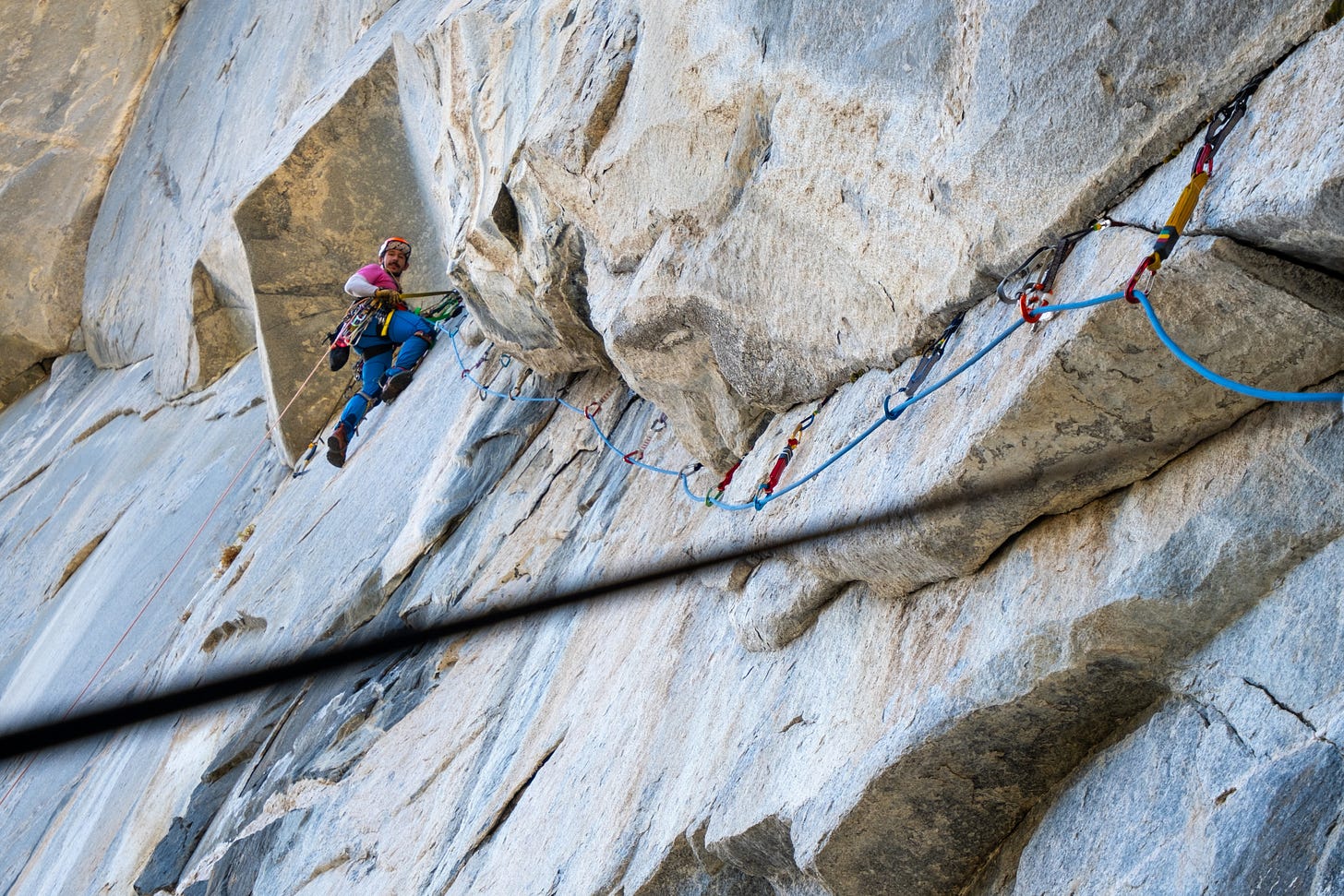Big Wall problems #1

Scenario
You and your partner are on a big wall, and you are several pitches up. The pitch your partner is climbing is a long horizontal traverse with minimum fixed gear, ranging in size from beaks to 4-inch cams and everything in between.
In order to clean the pitch, each piece must be left in, so no back-cleaning, so that the second (cleaner), can lower off the current piece, then reach back from the new one to clean the last piece. If the distance is too great, the lower off piece with either have to be abandoned (fixed), or the cleaner must add a piece above the piece to be cleaned (using a piece of protection they’ve already cleaned), and lower onto this.
On such traverses, one of the biggest issues is if gear rips out when lowering onto it, as this can leave the cleaner metres from the piece they have to clean (the only option here would be to replace the ripped piece and aid back down/sideways onto it).
On this pitch, the problem occurs when the leader is still ten metres from the anchor but finds themselves out of any suitable gear that fits the crack. Ordinarily, the second would zip up extra gear, but in this case, there is no gear left.
It will be dark in about an hour, what do you do?
Intermediate Belay
The simplest option, if it’s viable, is to create a belay at the point you run out of gear. Just back down three solid pieces and create a belay here, if you can. This means the leader of the next pitch will have to add on ten metres of extra climbing, or they could just climb to the solid belay and haul to that. The downside of this approach is you need to be sure that you can build a train-stopper belay, and there will be a reason why the belay is ten metres away. You must also be aware of any expansion or looseness in the rock you’re building a belay on, especially when hauling off it. It might be fine for creeping along or up, but not hanging your whole world on.
Retroactive back-cleaning
The climber might be able to create an intermediate belay and then lower down or back-aid to the last fix anchor and then clean these pieces.
The Lowe method.
In this method, one based on something Jeff Lower seemed to do often on big technical alpine climbs, where your rack would often run out, the following approach is taken.
The leader reverses down two or three placements, and builds an intermediate belay and fixes the lead line.
The second then jumars up the lead line (with the line fixed to the lower belay), and cleans a section of the route, ideally with a shopping list of gear required to reach the next belay.
Once the second had all the rack that will be needed, they rappel back to the belay, put the climber back on, and then send the rack up using the zip and haul line (don’t lose the end of the zip line!).
The leader retrieves the rack, dismantles the intermediate belay, and continues.




